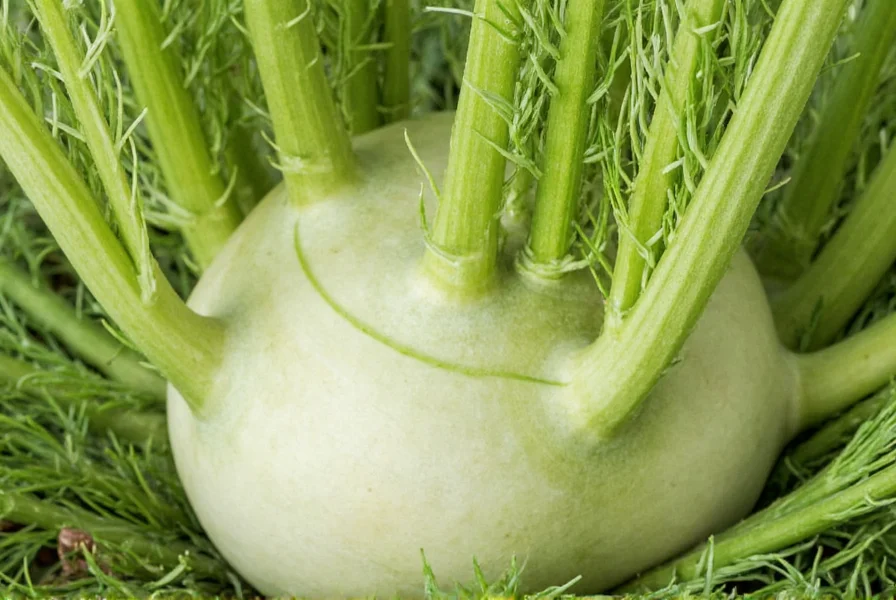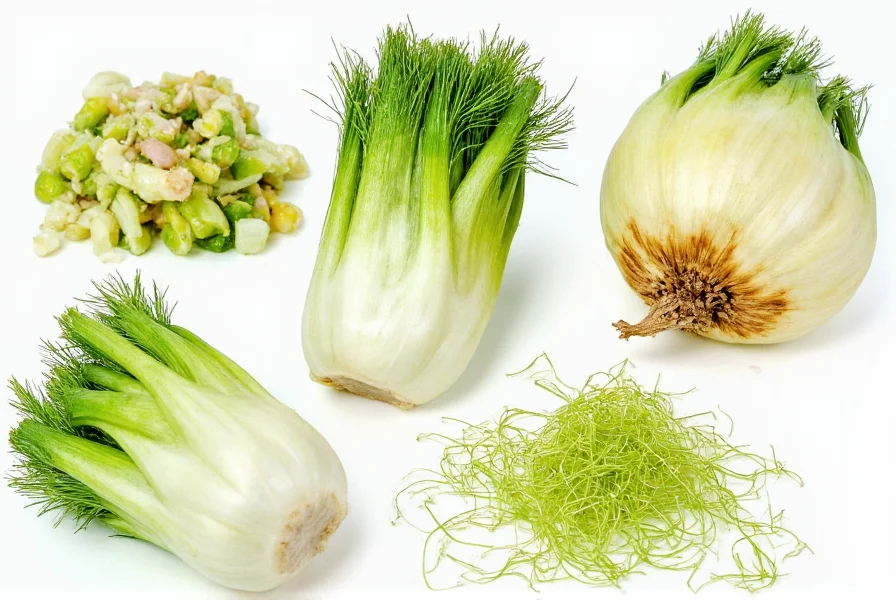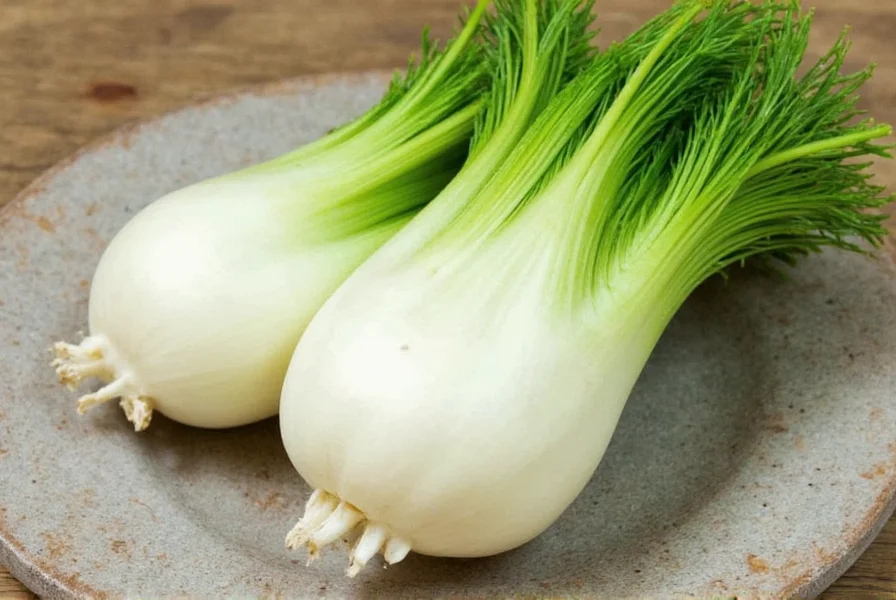When exploring what part of fennel do you eat, many home cooks discover this versatile plant offers multiple edible components, each with unique culinary applications. Understanding which parts of fennel are edible transforms how you incorporate this aromatic vegetable into your kitchen repertoire.
Understanding the Fennel Plant
Fennel (Foeniculum vulgare) is a hardy perennial herb with a distinctive anise-like flavor. Often mistaken for celery due to its appearance, fennel actually belongs to the carrot family. This cool-weather crop grows wild throughout Mediterranean regions but has become popular worldwide for its culinary versatility.

Edible Components of Fennel
Unlike many vegetables where only one part is used, fennel offers three distinct edible components, each with different preparation methods and flavor profiles.
| Part of Fennel | Texture | Flavor Profile | Best Culinary Uses |
|---|---|---|---|
| Bulb | Crisp, crunchy | Mild anise, sweet | Raw salads, roasted, grilled, braised |
| Fronds (Stalks) | Delicate, feathery | Stronger anise, herbaceous | Garnish, pesto, salad topping, herb blend |
| Seeds | Hard, small | Intense licorice, warm | Spice blends, baking, tea, pickling |
Using the Fennel Bulb
The bulb represents the most commonly consumed part of fennel. When selecting bulbs, look for firm, heavy specimens with crisp white layers and vibrant green stalks. Larger bulbs tend to have stronger flavor while smaller ones remain milder.
To prepare the bulb, first trim the stalks about an inch above the bulb. Remove any tough outer layers, then cut vertically through the core. The core remains edible but may be slightly tougher than the outer layers. For raw applications like salads, slice thinly using a mandoline for consistent results. When roasting fennel bulb, cut into wedges, toss with olive oil, and cook at 400°F until caramelized and tender.
Culinary Applications for Fennel Fronds
Many people discard fennel fronds, but these delicate green stalks offer intense flavor. The feathery fronds work exceptionally well as a fresh herb. Chop them finely to use as a garnish for fish dishes, add to vinaigrettes, or incorporate into compound butter. Their texture resembles dill but with a more pronounced anise flavor.
When considering how to use fennel bulb in cooking, remember that the fronds complement the bulb beautifully. Try making fennel frond pesto by blending the fronds with garlic, pine nuts, Parmesan, and olive oil—a perfect sauce for pasta or grilled meats.
Harvesting and Using Fennel Seeds
Fennel seeds develop when the plant flowers and represent the plant's reproductive component. These small, oval seeds carry the most concentrated anise flavor. Harvest seeds when they turn from green to brown and begin to dry on the plant.
Chefs often wonder can you eat fennel seeds raw. Yes, you can consume them raw, but toasting enhances their flavor dramatically. Dry-toast seeds in a skillet over medium heat until fragrant, then use in spice rubs, breads, or sausages. Fennel seeds also work wonderfully in tea blends—simply steep one teaspoon of crushed seeds in hot water for 5-10 minutes.
Storage Techniques for Maximum Freshness
Proper storage extends the usability of all fennel components. Keep the whole bulb unwashed in a perforated plastic bag in your refrigerator's crisper drawer. This method preserves freshness for 7-10 days. If you've separated the components, store the bulb wrapped in a damp paper towel inside a plastic bag.
For longer storage, consider freezing. Blanch sliced bulb pieces for two minutes, then freeze on a baking sheet before transferring to freezer bags. Frozen fennel works well in soups and stews but loses its crisp texture for raw applications.
Nutritional Benefits Across All Parts
Each edible portion of fennel contributes unique nutritional advantages. The bulb provides vitamin C, potassium, and dietary fiber. Fronds contain higher concentrations of antioxidants and vitamin A. Seeds offer the most concentrated source of phytonutrients, including anethole, which gives fennel its characteristic flavor and provides digestive benefits.
When exploring what does fennel taste like, note that the flavor profile varies across components. The bulb delivers a mild sweetness with subtle licorice notes, perfect for balancing rich dishes. Fronds intensify this flavor, making them ideal for finishing dishes. Seeds provide the strongest anise flavor, often used medicinally for digestive support.
Common Preparation Mistakes to Avoid
Many home cooks make these errors when working with fennel:
- Discarding the fronds instead of using them as a flavorful herb
- Peeling the bulb (unnecessary—just remove tough outer layers)
- Overcooking the bulb, which eliminates its pleasant crunch
- Using old, dried-out seeds that have lost their aromatic compounds
When determining best ways to prepare fennel, remember that raw applications showcase its crisp texture while cooking transforms it into a sweet, caramelized vegetable. The key is matching the preparation method to the specific part you're using.

Seasonal Availability and Selection Tips
Fennel reaches peak season from fall through early spring in most temperate climates. During these months, you'll find the crispest bulbs with the most vibrant flavor. When selecting fennel, look for bulbs that feel heavy for their size with no brown spots or soft areas. The stalks should stand upright rather than drooping.
Understanding fennel plant edible parts helps reduce food waste while expanding your culinary options. By utilizing the entire plant, you maximize both flavor potential and nutritional benefits while minimizing kitchen waste.
Frequently Asked Questions
Can you eat the entire fennel plant?
Yes, all parts of the fennel plant are edible. The bulb serves as the primary vegetable component, the feathery fronds function as a fresh herb, and the seeds provide aromatic spice. Each part offers different flavor intensities and culinary applications.
How do you prepare fennel bulb for raw consumption?
To prepare fennel bulb raw, trim the stalks and root end, remove any tough outer layers, then slice thinly. Soaking sliced fennel in ice water for 15-20 minutes enhances its crispness. Raw fennel works beautifully in salads, slaws, and as a crunchy element in sandwiches.
What's the difference between fennel and anise?
While both contain anethole (providing the licorice flavor), fennel is a vegetable with a bulb, stalks, and seeds, whereas anise is primarily grown for its seeds. Fennel has a milder, sweeter flavor profile compared to the more intense, sharper taste of anise seed. Fennel also offers textural variety through its different edible parts.
Can fennel seeds be used medicinally?
Yes, fennel seeds have traditional medicinal uses, particularly for digestive support. The compound anethole helps relax gastrointestinal muscles. Many cultures use fennel seed tea to alleviate bloating and gas. However, consult a healthcare provider before using fennel for medicinal purposes, especially if pregnant or taking medications.











 浙公网安备
33010002000092号
浙公网安备
33010002000092号 浙B2-20120091-4
浙B2-20120091-4